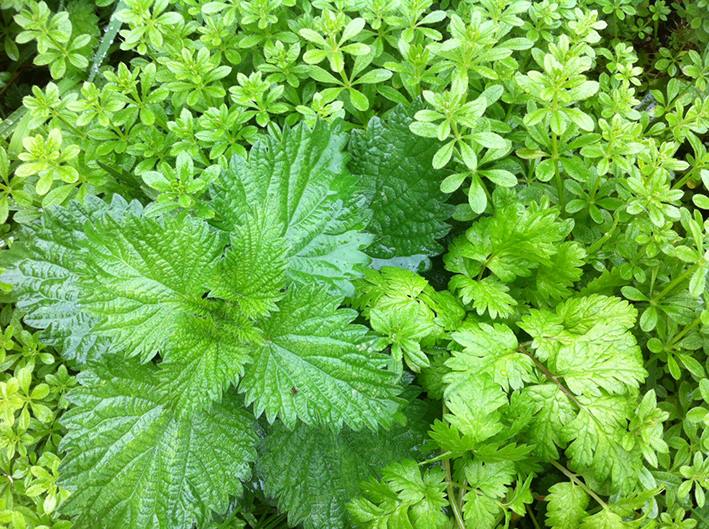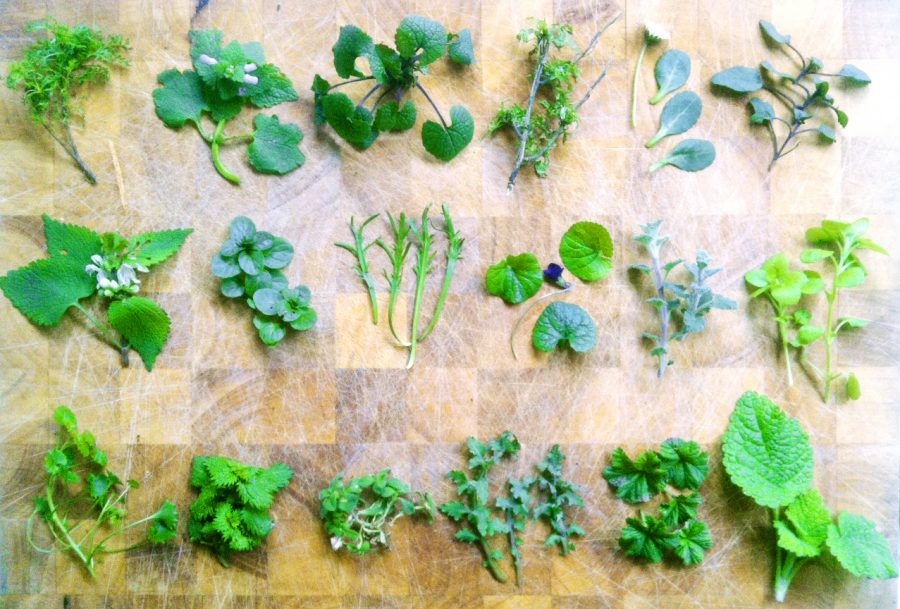 It’s the start of March and I have just been for a stroll around Victoria Park. I like to pretend that what I do is work so I decided this was some very early preparation for the walk I’m running there in May. According to the council’s website, it was the first East End park to be created after a petition from over 30000 people was sent to Queen Victoria in 1840 asking for a green space to improve the quality of life for the 400000 slum dwelling local residents. It’s far from a slum these days but the park still serves the same purpose and enhances the area enormously, with so many people using this beautiful place for a fabulous variety of pastimes. Personally speaking, without these green spaces I would be unable to tolerate the city at all and more importantly would not be able to pursue my obsessive foraging activities!
It’s the start of March and I have just been for a stroll around Victoria Park. I like to pretend that what I do is work so I decided this was some very early preparation for the walk I’m running there in May. According to the council’s website, it was the first East End park to be created after a petition from over 30000 people was sent to Queen Victoria in 1840 asking for a green space to improve the quality of life for the 400000 slum dwelling local residents. It’s far from a slum these days but the park still serves the same purpose and enhances the area enormously, with so many people using this beautiful place for a fabulous variety of pastimes. Personally speaking, without these green spaces I would be unable to tolerate the city at all and more importantly would not be able to pursue my obsessive foraging activities!
I only walked for about an hour but came across about 40 interesting edible or medicinal plants, 18 of which are in the picture below. There is so much to see here, even with hardly any of the trees showing leaves or blossoms yet and I’m already looking forward to May. So, here’s what I found……..
Top row from the left.
Swine cress. A great little peppery member of the cabbage family. Not so common in London but all over this park.
Red dead nettle. Much smaller than the white variety. Busting with Iron and Silica. Great raw or cooked. The flowers are mauve but the colours have gone a bit odd in this photo.
Garlic mustard. Wonderfully garlicy. Use it wilted like spinach. Goes great with everything especially potatoes or in omelettes.
Hedge mustard. Loves to grow on waste grounds and road sides. Peppery edible leaves, flowers and seeds.
Common daisy. A bit unpleasant raw unlike delicious Oxeye daisy. Makes a nice vegetable wilted or steamed.
Self heal. Tasty but bitter in salads. A very common herb used to treat cuts, inflammation and bruising.
Middle row from the left.
White dead nettle. Like stinging nettle, these plants are loaded with Protein and Iron and taste terrific cooked or (unlike Stinging nettle) raw.
Water mint. Growing all round the east lake. An amazing smelling mint with a lovely fresh flavour.
Buckshorn plantain. More of a coastal plant than a city dweller. A robust salad plant with various medicinal uses.
Sweet violet. A few leaves go well in a mixed salad and the purple flowers look and taste wonderful.
Cat mint. A lovely cool mint flavour and a felty texture when young. Too strong and too tough later on.
Chickweed. One of the best winter salads. Be sure it’s out of the dog wee zone as it thrives at the base of city trees.
Bottom row from the left.
Hair bell. All members of the Campanula family are edible. This one is very common in London and tasty in salads.
Stinging nettle. Makes a wonderful beer, a brilliant soup, a great spinach substitute, 40% Protein and crammed full of other vitamins and minerals. This should be our national dish.
Mouse ear chickweed. The hairy and equally yummy relative of Common chickweed. Beware poisonous lookalikes such as Scarlet pimpernel and Speedwell.
Sow thistle. A tasty daisy relative. Very similar to Wall lettuce. Use as a salad or cooked like spinach.
Common mallow. A relative of Marsh mallow. Tasty leaves and flowers. Used to make the exotic Mulukhiya soup.
Black horehound. What a wonderful name. Bitter as hell to eat but will get your digestive juices flowing for sure.





This sounds almost as good as Central Park (I teach foraging throughout the Greater NY area), with some plants that grow here, and others I’d love to see if I ever travel to England. Hope your tours go well.
I’d like to emphasize that the poisonous scarlet pimpernel you mentioned is especially dangerous if you’re French (watch the movie or read the book by the same name — they’re hilarious!)
thanks Steve, would love to see an equivalent selection of Central Park delicacies…i could post it on my site if you had time to do an an anglo american salad exchange..all the best john
Stinging nettle above ground parts are used along with large amounts of fluids in so-called “irrigation therapy” for urinary tract infections (UTI), urinary tract inflammation, and kidney stones (nephrolithiasis). The above-ground parts are also used for allergies, hayfever, and osteoarthritis.'”‘;
thanks Christina, good info
I love all the October foraging!!